Bacillus coagulans ameliorates inflammatory bone loss in post-menopausal osteoporosis via modulating the "Gut-Immune-Bone" axis
- PMID: 40275534
- PMCID: PMC12036487
- DOI: 10.1080/19490976.2025.2492378
Bacillus coagulans ameliorates inflammatory bone loss in post-menopausal osteoporosis via modulating the "Gut-Immune-Bone" axis
Abstract
Osteoporosis is a systemic skeletal disease that leads to lower bone mineral density and intensifies the risk of unexpected fractures. Recently, our group reported that numerical defect in the frequencies of Bregs along with their compromised tendency to produce IL-10 cytokine further aggravates inflammatory bone loss in post-menopausal osteoporosis (PMO). Dysbiosis induced mucosal injury and leaky gut are the predominant contributors involved in the progression of inflammatory diseases including PMO. Furthermore, several evidence suggest that gut microbial composition plays a crucial role in the development and differentiation of Bregs. Nevertheless, the potential role of dysbiotic gut microbiota (GM) and Bregs under estrogen deficient PMO conditions has never been deciphered. Here, we evaluated the role of GM in the onset and progression of PMO along with its role in modulating the anti-osteoporotic potential of Bregs. We found that enhancement in the endotoxin producing bacteria and concomitant reduction in the short chain fatty acids producing bacteria, both under pre-clinical and clinical osteoporotic condition augment inflammatory bone loss. This suggests that dysbiosis of GM potentially exacerbates bone deterioration under estrogen deficient PMO conditions. Remarkably, supplementation of probiotic Bacillus coagulans significantly improved the bone mineral density, bone strength, and bone microarchitecture by modulating the anti-osteoclastogenic, immunosuppressive and immunomodulatory potential of Bregs. The present study delves deeper into the role of immune homeostasis ("Breg-Treg-Th17" cell axis) and GM profile in the pathophysiology of PMO. Altogether, findings of the present study open novel therapeutic avenues, suggesting restoration of GM composition as one of the viable therapeutic options in mitigating inflammatory bone loss under PMO conditions via modulating the "Gut-Immune-Bone" axis.
Keywords: Bacillus coagulans (BC); GUT; SCFAs; immunoporosis and bone health; osteoclast; osteoporosis; regulatory B cells.
Conflict of interest statement
No potential conflict of interest was reported by the author(s).
Figures

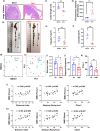

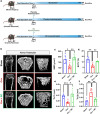
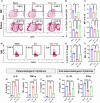



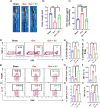

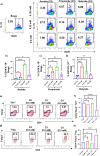


References
-
- Srivastava RK, Sapra L.. The rising era of “Immunoporosis”: role of immune system in the pathophysiology of osteoporosis. J Inflamm Res [Internet]. 2022;15:1667–26. https://www.dovepress.com/the-rising-era-of-immunoporosis-role-of-immune.... - PMC - PubMed
-
- Srivastava RK, Dar HY, Mishra PK. Immunoporosis: immunology of osteoporosis—role of T cells. Front Immunol [Internet]. 2018;9. http://journal.frontiersin.org/article/10.3389/fimmu.2018.00657/full. - DOI - PMC - PubMed
-
- Woltman K, den Hoed PT. Osteoporosis in patients with a low-energy fracture: 3 years of screening in an osteoporosis outpatient clinic. J Trauma Inj Infect Crit Care [Internet]. 2010;69(1):169–173. https://journals.lww.com/00005373-201007000-00026. - PubMed
-
- Sapra L, Bhardwaj A, Mishra PK, Garg B, Verma B, Mishra GC, Srivastava RK. Regulatory B cells (Bregs) inhibit osteoclastogenesis and play a potential role in ameliorating ovariectomy-induced bone loss. Front Immunol [Internet]. 2021;12. https://www.frontiersin.org/articles/10.3389/fimmu.2021.691081/full. - DOI - PMC - PubMed
MeSH terms
LinkOut - more resources
Full Text Sources
